In case you're interested in how I did it in the Periscope iOS app, it's actually pretty simple...
TL;DR; Add a transparent table header header view with a height equal to your table view frame's height. Then, as you add cells to your table, simply animate the table view's content offset.
Give your table view a header view:
- (UIView *)tableView:(UITableView *)tableView viewForHeaderInSection:(NSInteger)section
{
UIView *headerView = [[UIView alloc] initWithFrame:CGRectZero];
headerView.userInteractionEnabled = NO; // all touches within this space must go through to the video layer
return headerView; // empty header above chat, so messages flow in from bottom
}
- (CGFloat)tableView:(UITableView *)tableView heightForHeaderInSection:(NSInteger)section
{
return self.tableView.frame.size.height; // empty header above chat, so messages flow in from bottom
}
Add data to your table (in my case, messages get added to an array called _messages. I then call reloadData on the UITableViewController). Then call this method to animate the cells in:
- (void)scrollTableToBottom
{
if (!self.isViewLoaded || _messages.count == 0)
return;
CGFloat offsetY = self.tableView.contentSize.height - self.tableView.frame.size.height + self.tableView.contentInset.bottom;
[UIView animateWithDuration:0.33
delay:0
options:UIViewAnimationOptionCurveEaseOut | UIViewAnimationOptionAllowUserInteraction
animations:^{
[self.tableView setContentOffset:CGPointMake(0, offsetY) animated:NO];
}
completion:nil];
}
Hope that helps. I found this to be a pretty cheap/simple way of simulating cells anchored to the bottom. I know some people have mentioned flipping the table upside down, but that just seems crazy to me. :-)
